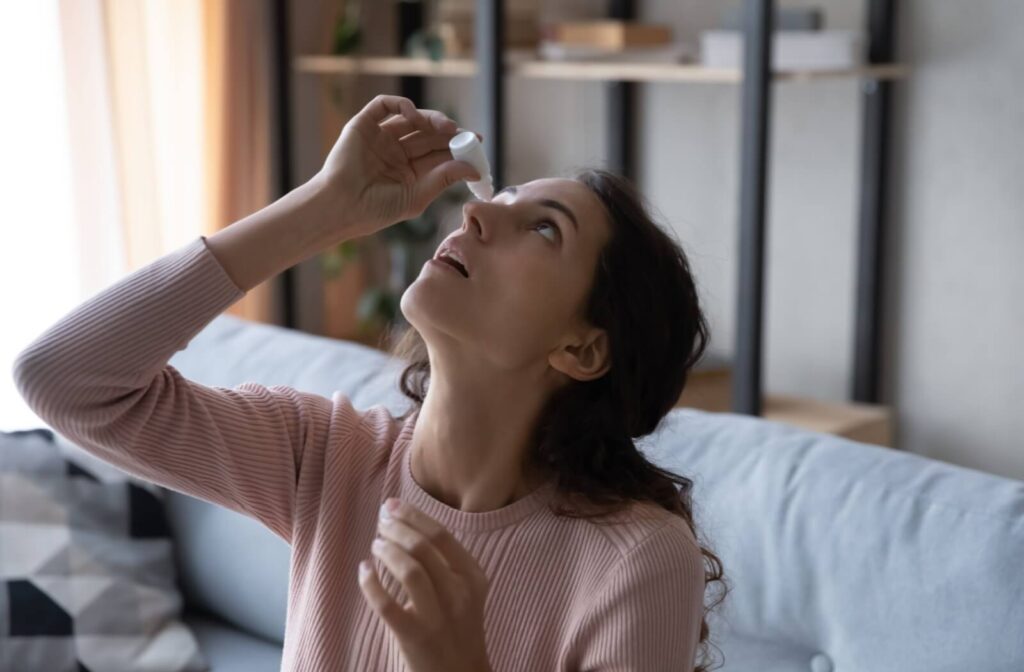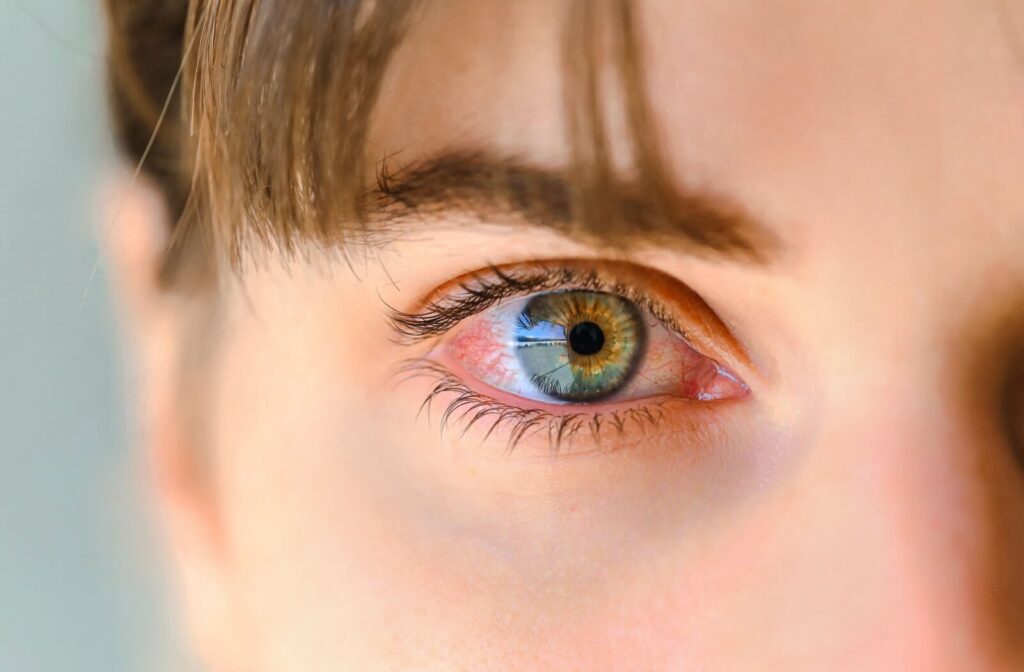Pink eye might be common, but there are several other conditions that mimic pink eye’s symptoms. These eye conditions can include:
- Allergies
- Blepharitis
- Dry eye disease
- Subconjunctival hemorrhage
- Styes
- Iritis
While these conditions may look alike, they tend to differ significantly in their causes, treatment methods, and progression.
Without a proper diagnosis, it’s all too easy to treat the wrong issue, delaying healing and prolonging discomfort. Fortunately, an eye exam can tell you what’s gone wrong and put you on the road to recovery.
Why Getting the Diagnosis Right Matters
At first glance, pink eye (also known as conjunctivitis) seems straightforward to spot. But the redness, swelling, and irritation commonly associated with conjunctivitis can also occur in other eye conditions. Misdiagnosing your or your child’s symptoms can lead to ineffective treatments, unnecessary discomfort, and prolonged recovery periods.
An accurate diagnosis requires more than a surface-level guess. Eye doctors assess not just your symptoms but also your lifestyle, health history, and environmental factors. This allows them to determine exactly what you’re suffering from and craft a plan to get your eyes back to feeling and looking healthy.
Here are some common culprits that are often mistaken for pink eye.
Allergies
Allergies are a common cause of red, itchy eyes. When they affect your eyes, they’re often referred to as allergic conjunctivitis. This condition occurs when your eyes react to allergens like pollen, pet dander, or dust, causing the immune system to kick into overdrive. Allergic pink eyes share many symptoms with viral and bacterial pink eye, but there are subtle differences, such as:
- Allergies typically cause itchiness rather than the soreness or burning sensation common in bacterial or viral pink eye.
- Other allergic symptoms, such as sneezing or nasal congestion, often accompany the irritation to your eye.
- Allergies usually affect both eyes simultaneously, while pink eye can start in one eye before spreading to the other.
Treating eye allergies requires antihistamines, allergen avoidance, and artificial tears rather than antibiotics. Fortunately, allergic conjunctivitis is not contagious, unlike the viral and bacterial types.
Blepharitis
Blepharitis, or inflammation of the eyelids, is another condition that resembles pink eye. It often occurs when oil glands near the lashes become clogged, causing redness, swelling, and crusty buildup.
Blepharitis differs from pink eye in several ways:
- Crusty flakes or buildup around the eyelashes are more common with blepharitis.
- Blepharitis tends to be chronic, with symptoms fluctuating between flare-ups, while pink eye typically develops more suddenly.
- Pink eye symptoms affect the conjunctiva, while blepharitis primarily impacts the eyelids.
Blepharitis is best managed with eyelid hygiene routines like warm compresses, gentle cleansing, and professional treatments if necessary.
Dry Eye Disease
Dry eye is a chronic condition caused by insufficient tear production or your tears evaporating too quickly. Redness, irritation, and even a gritty feeling often make dry eye a convincing pink eye look-alike.
Dry eye can be distinguished from pink eye because:
- Dry eye symptoms persist over time, while pink eye often begins suddenly.
- Unlike pink eye, dry eyes generally don’t produce significant discharge.
- Dry eyes are managed long-term, while pink eye can be resolved with targeted treatments like antihistamines or antibiotics.
Lifestyle changes, artificial tears, and professional therapies can help alleviate dry eye symptoms and improve overall comfort.

Subconjunctival Hemorrhage
A subconjunctival hemorrhage occurs when a small blood vessel bursts under the clear surface of the eye, creating a vivid red blotch. Though alarming in appearance, they’re typically painless and harmless.
Differences from pink eye include:
- The redness from a subconjunctival hemorrhage is bright and localized, whereas pink eye redness is more diffuse and spreads across the eye.
- Subconjunctival hemorrhages rarely cause discomfort, while pink eye may involve pain, swelling, or discharge.
This condition usually resolves on its own, but it’s a good idea to see an eye doctor to rule out underlying issues and confirm your overall eye health.
Styes
A stye is a small, pus-filled bump on the edge or inside of the eyelid that can sometimes be confused with pink eye. Styes are caused by the infection of an oil gland and share symptoms of redness, swelling, and discomfort with pink eye.
Styes can be differentiated from pink eye by:
- Styes are usually more localized, presenting as a distinct lump on the eyelid, while pink eye affects the conjunctiva more broadly.
- Styes may involve tenderness and crust formation directly around the infected gland.
Most styes heal with warm compresses, but severe or persistent cases may need professional evaluation.
Find Clarity with Your Eye Health
With so many similar conditions out there, navigating the differences can feel overwhelming. Fortunately, you don’t have to do it alone. By booking an eye exam with Headwaters Optometry, you can receive an accurate diagnosis and a treatment plan tailored to your needs.
Don’t let uncertainty about your eye health slow you down. Clearer, more comfortable days are waiting. Book your visit now and see the difference we can make for your vision!




